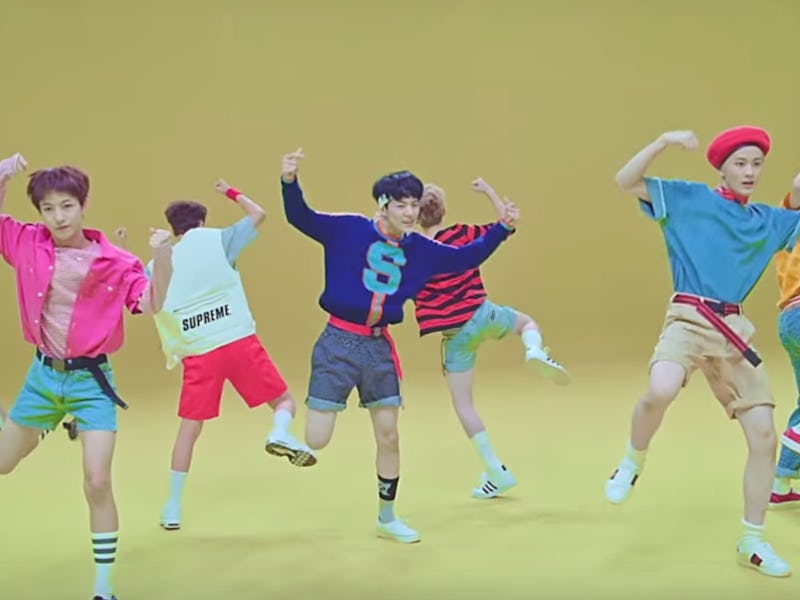What is Neo Culture Technology? Not a Band!
Comprised of multiple subunits based around the globe, the male K-pop collective NCT has an unlimited number of members.

Yesterday, the seven-member, teenage-boy group NCT Dream made its K-pop debut with single “Chewing Gum,” accompanied by a brightly-colored, campy video. If you get the strange feeling you’ve seen these boys before, don’t worry; You probably have.
NCT Dream is the most recent boy group to emerge from Neo Culture Technology, a reigning K-pop collective produced by S.M. Entertainment that consists of an unlimited number of male members from China, Korea, Japan, Thailand, Canada, and America divided into multiple subgroups based in cities worldwide. The six-member subgroup NCT U debuted in April with the release of the single “The 7th Sense,” followed by NCT 127, a seven-member group that stormed the scene with “Fire Truck” in July. NCT Dream marks the third NCT iteration, making NCT one of the most sensational K-pop acts of the summer – by virtue of abundance.
You may conflate several boy groups if you don’t pay close attention to the heavily manufactured world of K-pop, but NCT Dream boasts a distinctly youthful appeal compared to its counterparts, even though the oldest member, Mark, is in all three groups. Whereas NCT U and NCT 127 consist of NCT’s older members (about 20 years old) and relied on a bass-heavy, trap-inspired approach for the debut singles, NCT Dream – whose members average younger than 16 – packs an innocent, sugary punch.
With three boy groups on the scene that vary in age and appeal, NCT’s existence and quick takeover reaffirms the wild success of carefully calculated K-pop endeavors. Rather than trying to equip a single group with a wide range of skills, NCT appears to be following the “divide and conquer” route, assembling discrete boy bands with particular missions to hit all audience bases.
Without prior knowledge of NCT’s larger goal, NCT Dream’s “Chewing Gum” video may seem like an isolated effort to enliven the K-pop sphere. But, once the group is contextualized within the NCT network, NCT Dream looks more like a satellite office or military unit, albeit a very innocuous one. Within these units, the members are portrayed like action figures. Their stats, including their blood types, are listed online for fans to sort through.
The particular approach – of assembling various boy groups for specialized purposes – may come off as inauthentic, but the K-pop canon appears to favor profit over venerable art. In this layout, each of NCT’s boy groups are marketable items made strictly for consumption: generating a steady stream of revenue for their higher ups that manage S.M. Entertainment. That’s not to say all music coming out of mainland Asia boasts this similar money-grubbing transparency, but there are other acts that seek to accomplish the exact same thing. Take Baby Metal, for example: three teenage girls clad in school uniforms singing over metal music is the ultimate gimmick, but the group’s world-wide success speaks for itself.
The K-pop business model routinely puts a contrived foot forward, but what it lacks in creativity it makes up in variety and adaptability. The variation of boy groups emerging from NCT don’t challenge the boundaries of pop music in bold ways, but the mix and match style of Neo Culture Technology provides enough palatable options to mesh with the “I want more and I want it now” mentality of today. With three hugely successful boy bands assembled in just four months, NCT shows no signs of relenting. Even if you do wish the K-pop madness would stop, your shouts of inauthenticity will be drowned out by the sound of money pouring in.